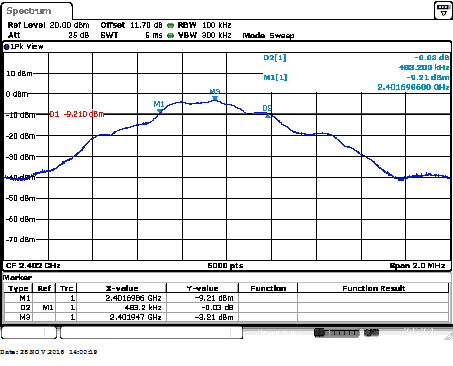Hi all,
Our company is in the process of certifying a device. This device is using a nrf52832 with radio.
We had no problem to comply with the ETSI standard, but things didn't go as expected for FCC certification.
The FCC §15.247 says that for systems using digital modulation, the minimum 6 dB bandwidth shall be at least 500 kHz.
This is the radio setting I used: Tx Power = -4dBm, Frequency = 2402Mhz, Mode = 1Mbit
This is the result obtain by the test lab:

They found the highest point M3 and draw a line at -6dB. The bandwidth at -6dB from M3 should be at least 500kHz. Unfortunately from the test lab results, the bandwidth is only 483.2 kHz.
So my question is, is there a firmware way to changing the bandwidth for a fixe channel?
Thanks in advance for the help, Stéphane Lovejoy


